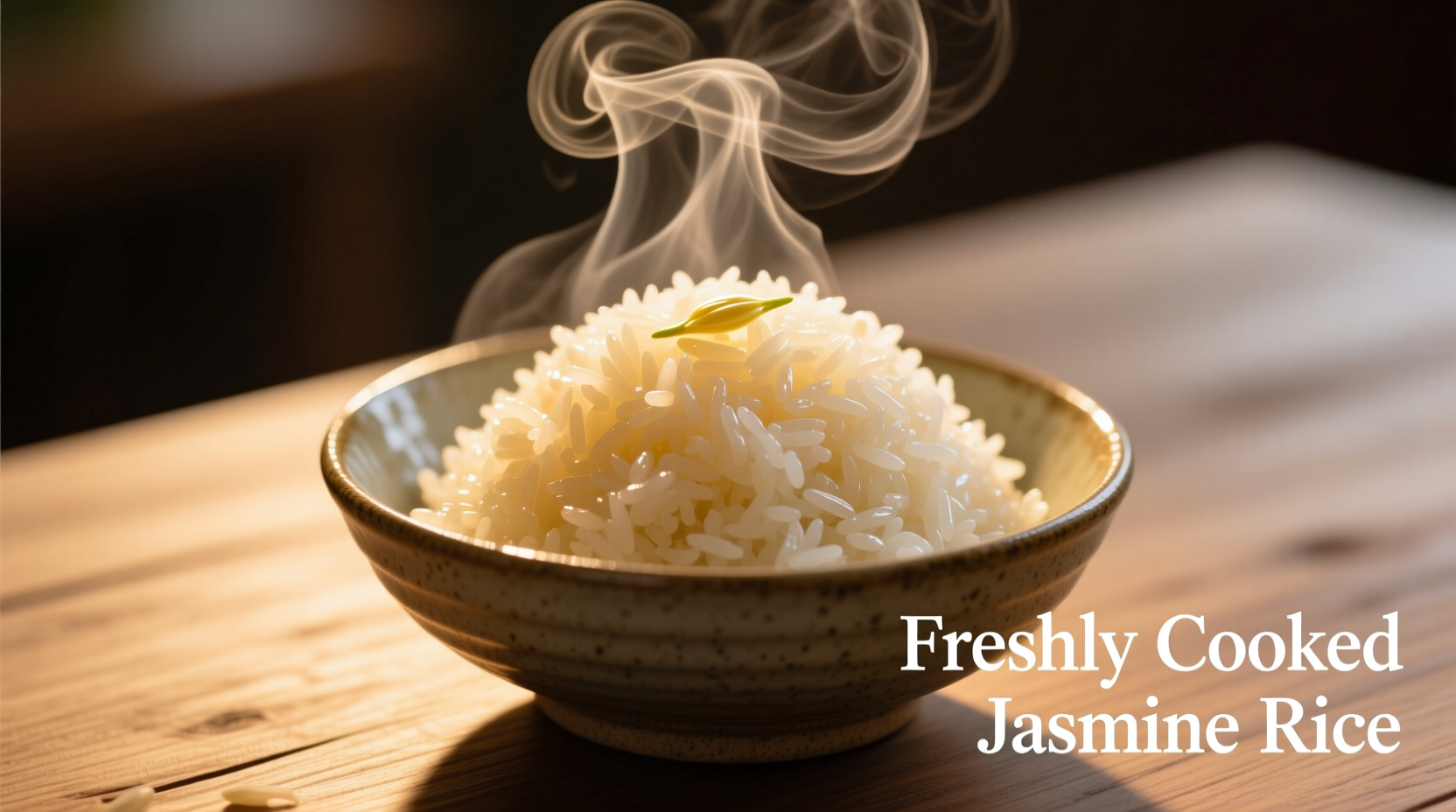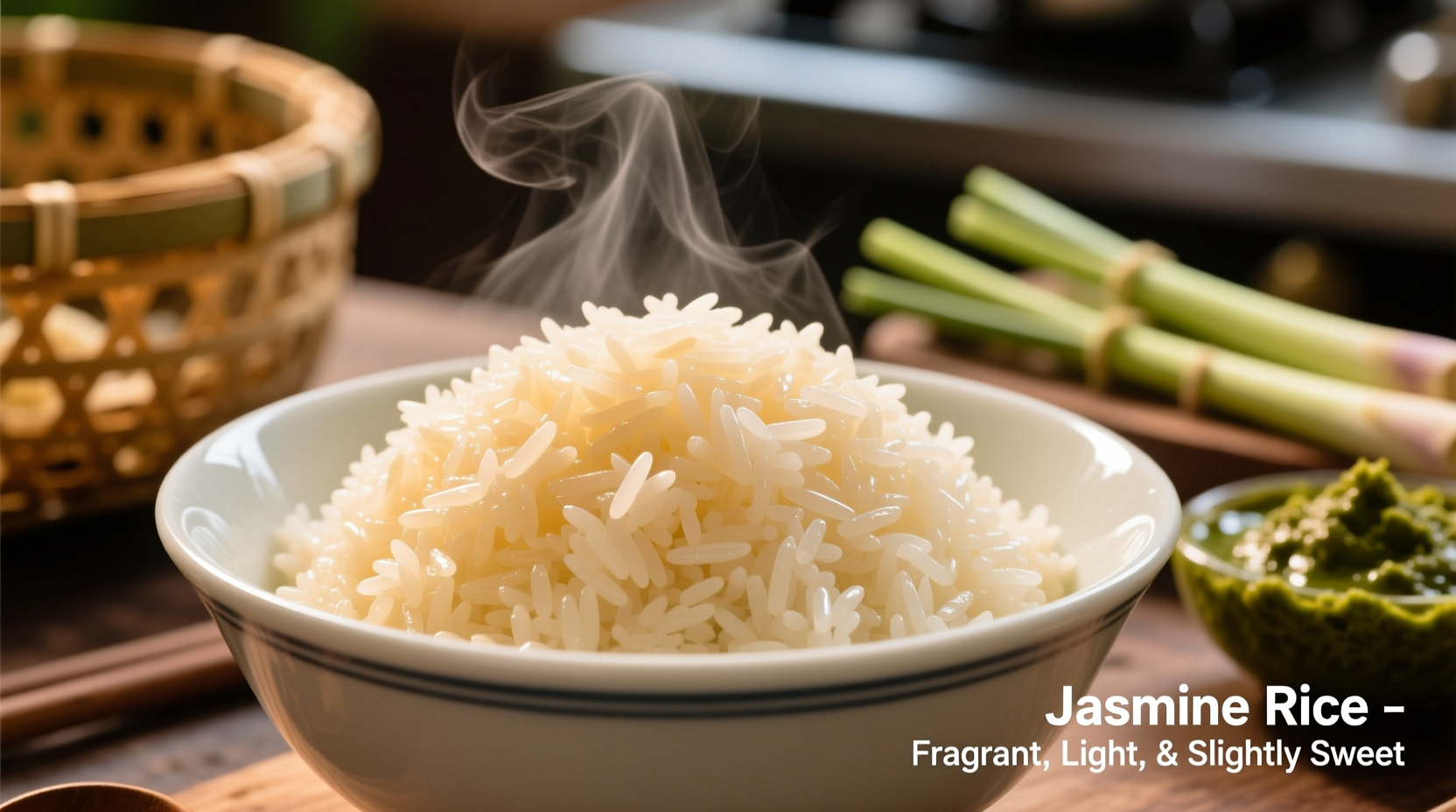Ever wondered why your Thai restaurant meals taste different at home? The secret often lies in the rice. Jasmine rice isn't just another grain—it's a sensory experience that transforms ordinary meals into authentic culinary journeys. Understanding its distinctive flavor profile helps you select, prepare, and pair this beloved rice variety correctly.
The Signature Flavor Profile of Jasmine Rice
When cooked properly, jasmine rice offers a harmonious balance of sensory characteristics that distinguish it from other rice varieties. The most notable feature is its natural floral aroma, often described as reminiscent of pandan leaves or popcorn. This distinctive scent comes from 2-acetyl-1-pyrroline (2AP), a volatile compound also found in basmati rice but at higher concentrations in premium jasmine varieties.
According to research published in the Journal of Agricultural and Food Chemistry, Thai Hom Mali rice (the premium grade of jasmine rice) contains 0.75-1.0 parts per million of 2AP—significantly higher than standard white rice varieties which contain negligible amounts. This compound creates that instantly recognizable fragrance that fills your kitchen as the rice cooks.
The taste follows the aroma with subtle sweet notes balanced by a delicate nuttiness. Unlike sticky sushi rice, jasmine rice maintains separate grains while offering a soft, slightly clingy texture that perfectly captures sauces without becoming mushy. The aftertaste is clean and refreshing, never overly starchy or bland.

How Jasmine Rice Compares to Other Varieties
Understanding how jasmine rice differs from other common rice types helps you choose the right variety for your culinary needs. This comparison reveals why certain dishes simply won't taste authentic with the wrong rice.
| Rice Variety | Aroma Profile | Flavor Characteristics | Texture When Cooked | Best Culinary Uses |
|---|---|---|---|---|
| Jasmine Rice | Floral, pandan-like | Sweet, nutty, delicate | Soft, slightly sticky, grains separate | Thai curries, Vietnamese dishes, stir-fries |
| Basmati Rice | Nutty, popcorn-like | Dry, earthy, more pronounced | Firm, fluffy, distinct grains | Indian curries, biryani, pilafs |
| Sushi Rice | Mild, vinegar-enhanced | Sweet-tangy from seasoning | Very sticky, cohesive | Sushi, onigiri, Japanese dishes |
| White Long-Grain | Nearly odorless | Neutral, slightly bland | Firm, separate grains | Side dishes, casseroles, rice salads |
Factors That Influence Jasmine Rice Flavor
Not all jasmine rice delivers that perfect floral aroma and delicate flavor. Several factors determine how your cooked rice will taste:
Quality and Age
Freshness matters significantly with jasmine rice. The USDA Agricultural Research Service notes that 2AP compounds degrade over time, diminishing that signature fragrance. Premium jasmine rice should be used within 6-12 months of harvest for optimal flavor. Look for "new crop" designations or harvest dates on packaging.
Water-to-Rice Ratio
Using too much water washes away surface starches that contribute to flavor and texture. The ideal ratio is 1¼ cups water to 1 cup rice for standard cooking. For enhanced aroma, try substituting ¼ cup of the water with coconut milk—a technique used in Southern Thai cuisine.
Cooking Method
Traditional stovetop cooking preserves more aroma than electric rice cookers, which often trap steam. For maximum fragrance, try the absorption method: rinse rice until water runs clear, soak for 20 minutes, then cook covered with precise water ratio without stirring.
When Jasmine Rice Shines: Culinary Applications
Jasmine rice's delicate flavor profile makes it ideal for specific culinary applications where you want the rice to complement rather than dominate the dish:
- Thai cuisine - Perfect with coconut-based curries where its subtle sweetness balances spicy heat
- Vietnamese dishes - Complements fish sauce and herb-forward preparations
- Light stir-fries - Absorbs sauces without becoming soggy
- Fruit-based dishes - Pairs beautifully with mango sticky rice (despite the name, jasmine works better than glutinous rice for this)
Avoid using jasmine rice in dishes requiring firm texture like pilafs or salads—it lacks the structural integrity of basmati or long-grain varieties. Similarly, its delicate flavor gets overwhelmed in heavily spiced dishes where basmati's stronger personality shines.
Troubleshooting Common Jasmine Rice Issues
When your jasmine rice doesn't deliver that expected floral aroma and delicate flavor, these common issues might be the culprit:
"My rice has no fragrance"
This usually indicates old or low-quality rice. Check the harvest date—jasmine rice should be used within one year for optimal aroma. Store uncooked rice in an airtight container away from light and moisture to preserve flavor compounds.
"My rice tastes bitter"
Bitterness typically comes from improper rinsing. Jasmine rice needs thorough rinsing to remove surface starches that can turn bitter when cooked. Rinse 3-4 times until water runs nearly clear, but don't over-rinse as this removes flavor compounds.
"My rice is too sticky"
Excess stickiness usually means too much water or insufficient rinsing. Use the 1¼:1 water-to-rice ratio and ensure proper rinsing. Let cooked rice rest covered for 10 minutes after cooking—this allows steam to distribute evenly for perfect texture.
Maximizing Jasmine Rice Flavor in Your Cooking
Professional chefs use these techniques to enhance jasmine rice's natural flavor profile:
- Add a pandan leaf or lemongrass stalk to the cooking water for amplified floral notes
- Cook with half water, half coconut milk for Southeast Asian dishes
- Toast the dry rice in the pot for 2 minutes before adding liquid to deepen nutty flavors
- Always let cooked rice rest covered for 10 minutes before fluffing
- Serve immediately—jasmine rice's delicate flavor diminishes as it cools
Remember that jasmine rice should complement your main dish, not compete with it. Its subtle flavor makes it the perfect canvas for vibrant Southeast Asian cuisines where the rice itself is part of the culinary experience.











 浙公网安备
33010002000092号
浙公网安备
33010002000092号 浙B2-20120091-4
浙B2-20120091-4